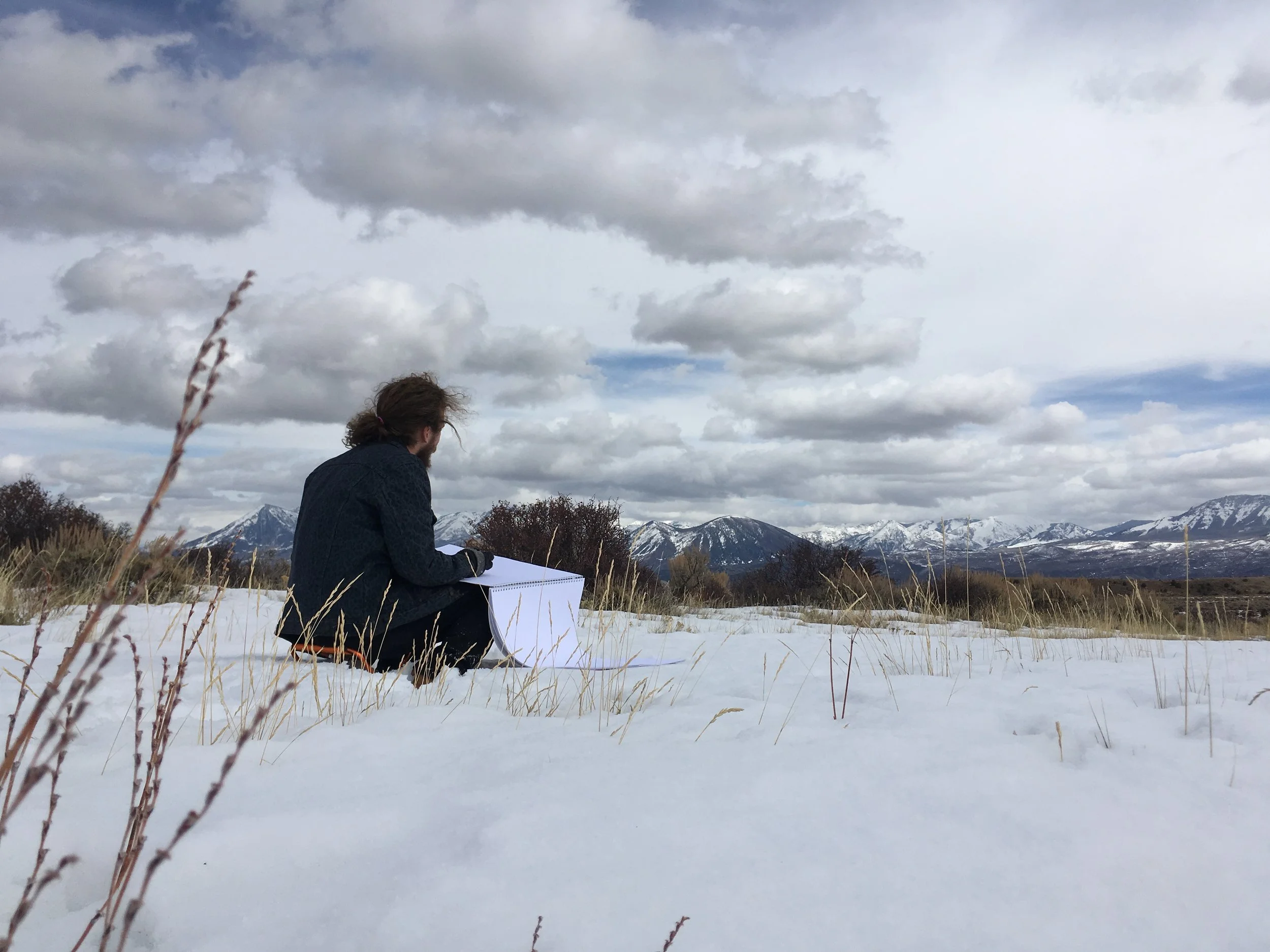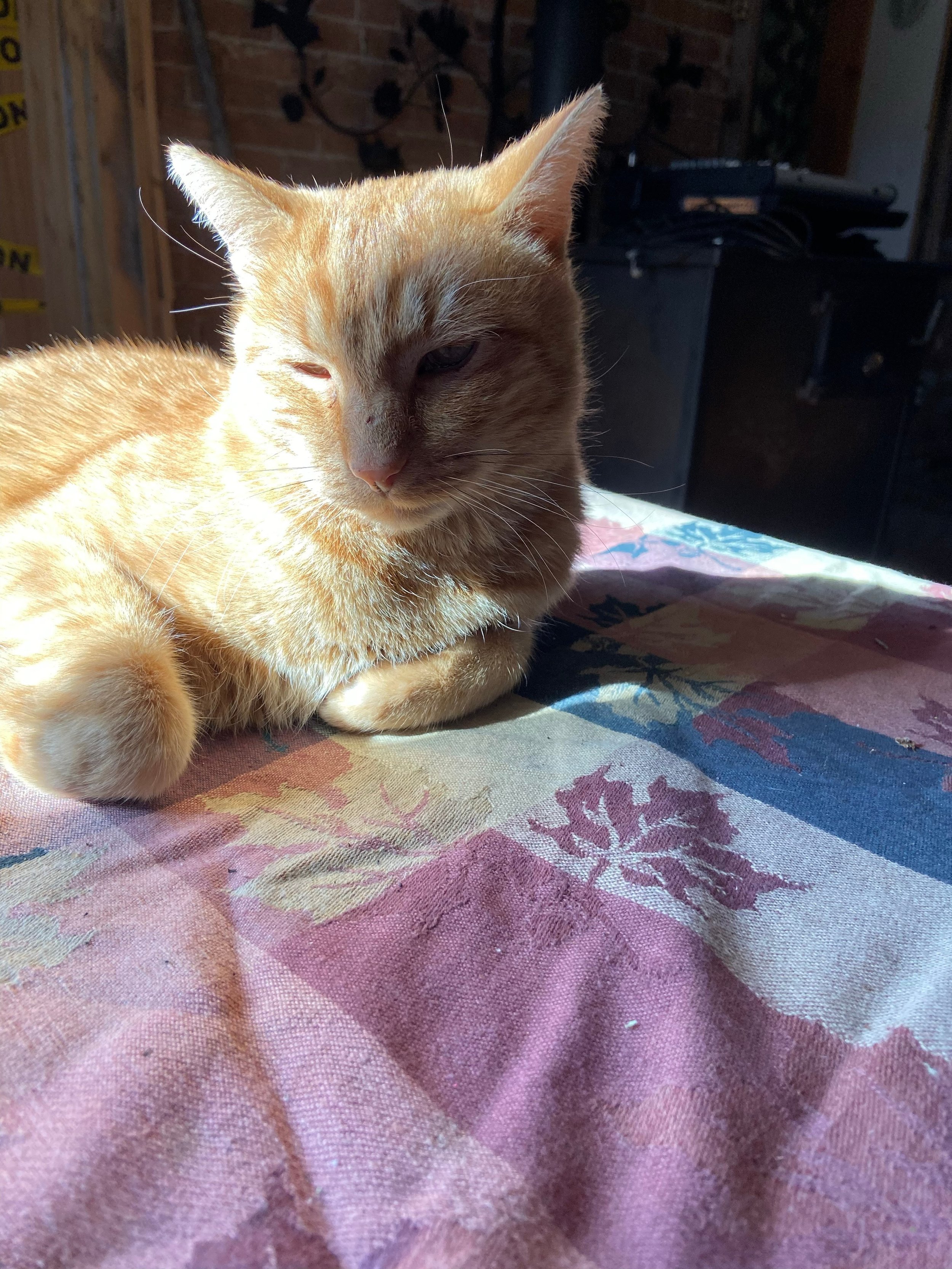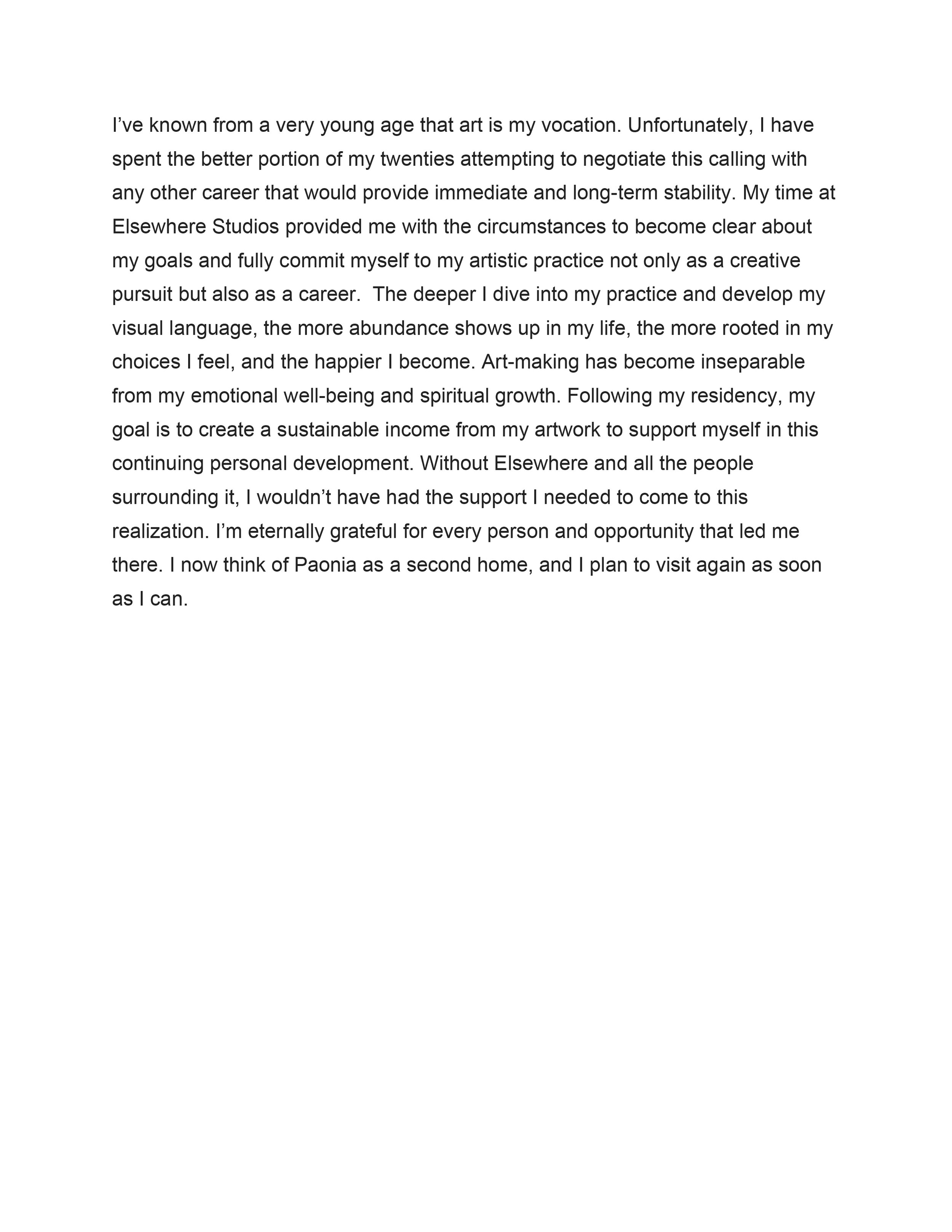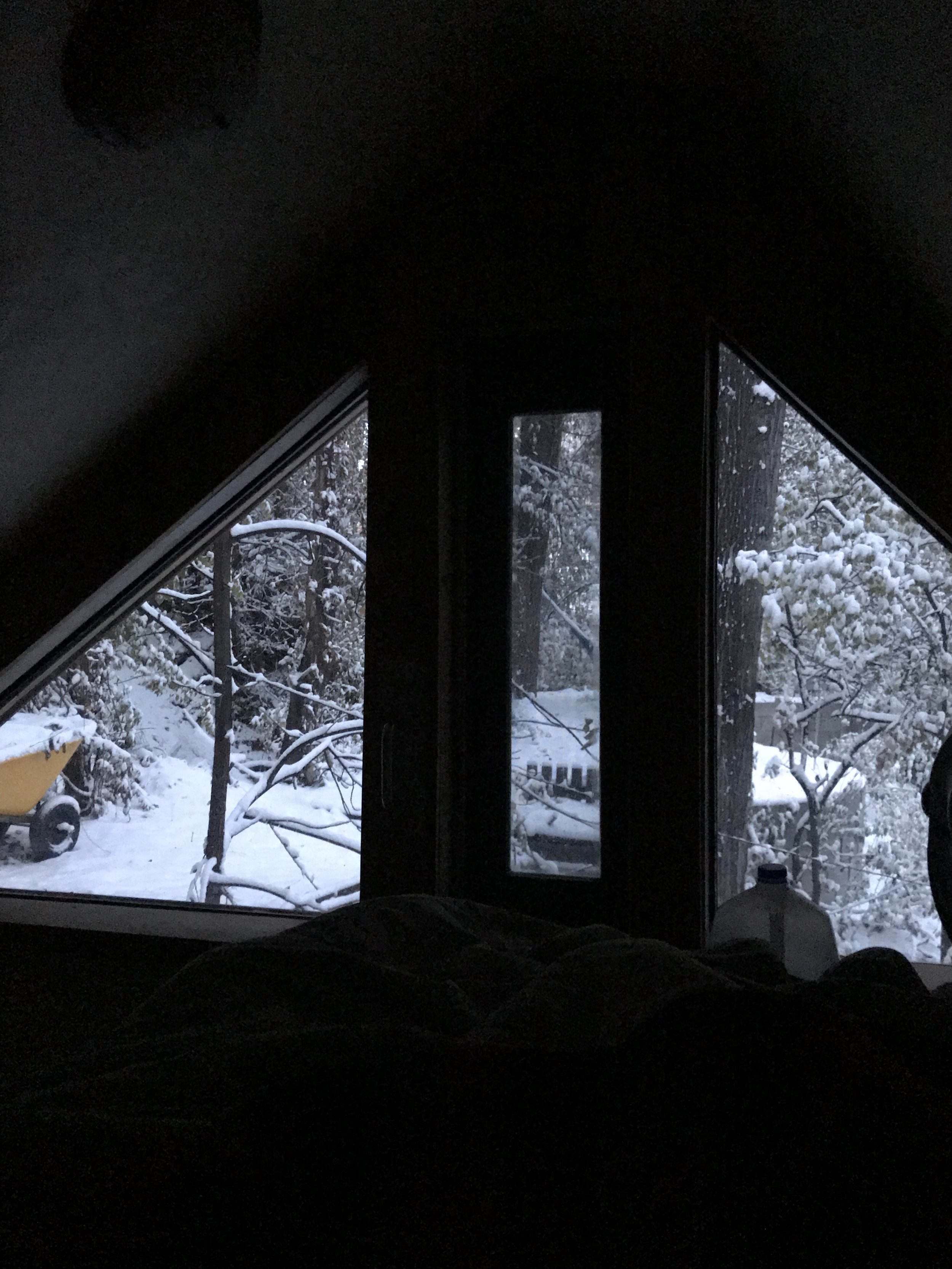Everywhere you look in Elsewhere Studios, there is something new to notice. Details of care and creativity in the woodwork, designs in the nooks, messages on the backs of pictures and cork boards, tiny treasures tucked away at the backs of drawers. The way the concrete pour behind the outlet is shaped like a flower, the fairies emerging from cracks painted into the Gingerbread House, cat toys in the planters, rainbow prisms dance at midmorning from crystals hung in the window. In four months of residency I never ceased to find new and mesmerizing details. Amidst this, what held me most were the windows.
Windows are something of a novelty to me, as this has been the longest I’ve slept indoors in 5 years. Since beginning the Her Odyssey journey with dipping my fingertips into the Beagle Channel off the archipelago beyond the southern tip of South America and picking up a small auburn rock and promising to carry it to the Arctic, I have been on the move. In those 5 years and 14,000 miles of human powered travel I have seen much, from soaring condors atop at 17,000 ft pass, to dogs who ride the ubiquitous mopeds around industrialized cities. It took a pandemic to force me to step off the route and retreat to the safety of a place from which to regard the journey, rather than living it.
In the words of John Dewey, “We do not learn from experience, we learn from reflecting on experience.” This encapsulates the heart of the magic which awaits in Paonia. Having been in motion for so long, engaged in the thick of it, the invitation to stop and be still ¾ of the way along our route, came in a difficult way. I navigated denial, depression, loss of sense of purpose and self, scorn and vitriol from trolls and disillusioned followers, before I found the strength to pivot my own internal narrative from that of “failure” to “opportunity.” It was as I made this shift that I found Elsewhere and in coming here, for the first time in years, I found a space which afforded the safety I needed to reflect back on the journey.
The thing about windows is that they separate you from the outside world and define a space. It is humbling to live out in the elements, to learn to survive through nieve blanca, snarling, hurling white out snow storms at 12,000 ft or slogging through oppressive heat so saturated with humidity that your lungs are swimming and clothing pastes to your skin as tightly as the sweat which binds it there. Whether facing the walls of bureaucracy at every border, or paddling a murky, crocodile infested river, the thing about it is that you can be nowhere but there, trying to survive the moment.
The depths of what you take away go unrealized until there is some distance, a pane of something to protect you. A place from which to safely regard the elements and life alike and from there, to take it to the page. The windows at Elsewhere and the spirit inside, afforded me that. It holds space for creativity and an invitation to explore all art forms, from silks to paints, to negative space. Whether I was focused at the desk or awash in my flights and fears, Elsewhere nurtured the process. When I needed distraction or to circle the matter to assure myself it can no longer nip at my heels, contort my cells, nor threaten my life, there were silks to hang from and implements to draw with. Then, when I was ready and felt safe to write, there was the invitation of silence and blank pages.
Something further afforded by windows creating a safe and defined space, is being separated from the hurry and worries of the outside world. Here new and unexpected sprouts of creativity may peep their heads up. As I watched the rotation of month long residents, all in academic recovery, each birthed a creative process which had been unanticipated. Ideas and visions which might not find root or courage to sprout in any other place, seem to thrive within these walls and under the refracted light of the windows. I experienced something similar as my daily “To Do” lists over the course of the tenure shifted from specific and detailed summons:
□ write x# of Pomodoros
to a general call:
□ create
Whether I ended up spending the afternoon taking gravestone rubbings, playing with gothic lettering at the easel, or experimenting with erasure poetry or pastels, all were nutritious, even knowing it would ultimately end up in the compost heap of creativity, to enrich untold future seeds. It was difficult to overcome the summons to productivity, to linear creation and moving toward a defined objective but once I did release, I found a much more expansive experience and self. When your time comes to take up residence in this space, do not fear the distractions. Elsewhere offers unexpected windows into your own well of inspiration and may show you the way to projects you didn’t know were in you.
A final window I spent a fair amount of time peering through, was the view into the community of Paonia. The people who live at this threshold between plains and peaks, this intersection of philosophies and perspectives, and the wealth and conflict generated by that diversity even within the homogeneity of this region, touched something in me. While the 5 months in this town have been the longest I’ve laid my head in one place in 5 years, the truth is that I have been on the move since I was 2 years old, never having lived anywhere longer than a handful of years. To have conversations with folks who have stewarded the same land for five generations of family or meeting other new arrivals, was a fascinating interplay.
I have just watched my last sunset through the Suite window. Crepuscular light yawns over a sea of trees beyond which the open plains stretch to the south. Cupped from the north by the Rockies. In this transitional zone between the two, the canyons hold secrets of eons and peoples past, the peaks from which you can survey hundreds of miles of the wide world. Here in this pocket, is the space far enough afield and safe enough to cultivate vision beyond what can be seen.
You can follow the rest of Her Odyssey at:
Website- https://www.her-odyssey.org/
YouTube- https://www.youtube.com/c/HerOdyssey
Instagram- https://www.instagram.com/_herodyssey_/
Facebook- https://www.facebook.com/herodyssey
Twitter- https://twitter.com/her_odyssey?lang=en
Her Odyssey Route to Date. Red-Walked, Blue- Paddled, Orange-Bikepacked
PC: Skylar Taylor, Jan 2021 Elsewhere Resident
Tomatoes The Cat in Residence, likes to follow the muse around the studios and place himself right where creativity is happening.
Petroglyphs right down the road!
Pomodoros helped keep me on task toward daily writing goals.
Learning to have the courage to draw at the Black Canyon

























